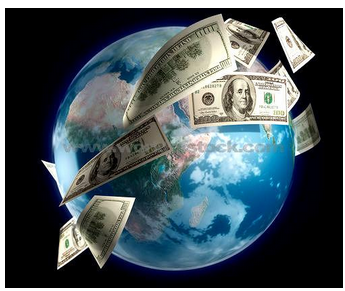International Trade
Lifeline Of National Economy of Class 10
IMPORTANCE OF TRADE:
Modern life is so complex that one has to depend on others. No country today can prosper without the cooperation and assistance of others. In the present world, Trade has become a necessity as
- No country is self reliant, each country lacks in one resource or the other. On the other hand some resources are in excess. Requirements can be fulfilled only through trade.
- In times of calamities, trade relations are very useful as help can be received through the friendly countries.
- Trade relations are a guarantee of peace. It is generally believed that the trading countries are not going to fight with each other as they are interdependent.

International Trade
COMPONENTS OF INTERNATIONAL TRADE:
- Export and import are the components of trade.
- The balance of trade of a country is the difference between its export and import.
- When the value of export exceeds the value of imports. It is called a favourable balance of trade.
- On the contrary, if the value of imports exceeds then the value of exports, it is termed as an unfavourable balance of trade.
BALANCE OF TRADE:
The difference between exports & imports is known as the balance of trade. If value of exports is more than the value of imports it is called favourable balance of trade and if value of import is move than the value of export it is called unfavaurable balance of trade. In 2000-01 India had a foreign trade of Rs 43 lakh crore. Import constituted 53% and export 47% so it is unfavourable balance. India has trade relations with all the trading blocks of the world, most of the commodities exported from India consist of both raw material and manufactured goods which fetches less income. Commodities imported are mostly petroleum, gold, chemicals etc. which are more costly. Thus the overall balance of trade is unfavourable.
International trade has undergone a sea change in the last fifteen years. Exchange of commodities and goods have been superseded by the exchange of information and knowledge. India has emerged as a software giant at the international level and it is earning large foreign exchange through the export of information technology.
TOURISM AS A TRADE:
- Tourism in India has grown substantially over the last three decades.
- Foreign tourist’s arrivals in the country witnessed an increase of 23.5 per cent during the year 2004 as against the year 2003, thus contributing Rs 21,828 crore of foreign exchange.
- Over 2.6 million foreign tourists visit India every year.
Tourism in India
- Indian is ranked worlds 4th best holiday haven.
- More than 15 million people are directly engaged in the tourism industry.
- Tourism also promotes national integration, provides support to local handicrafts and cultural pursuits.
- It also helps in the development of international understanding about our culture and heritage.
- Foreign tourists visit India for heritage tourism, eco tourism, adventure tourism, cultural tourism, medical tourism and business tourism.
- Rajasthan, Goa, Jammu and Kashmir and temple towns of south India are important destinations of foreign tourists in India. There is vast potential of tourism development in the north-eastern states and the interior parts of Himalayas, but due to strategic reasons these have not been encouraged so far.









